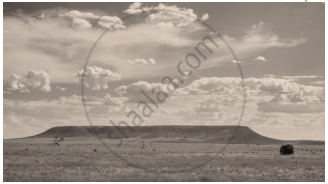Advertisements
Advertisements
Question
How is the Himalayan River system different from the Peninsular River system?
Solution
| Himalayan River System | Peninsular River System | |
| 1 | The basins and catchment areas of the Himalayan rivers are huge. | The basins and catchment regions of peninsular rivers are relatively smaller. |
| 2 | Snowfall feeds these rivers, which flow continuously throughout the year. They are, hence, everlasting. | Rain is the main source of water for these rivers, and the monsoon season has a big impact on how much water flows through them. They are seasonal as a result. |
| 3 | These rivers create deep gorges. | The rivers run in low-lying valleys. |
| 4 | These rivers are used for both navigation and irrigation. | These are not the best rivers for transportation or irrigation. |
APPEARS IN
RELATED QUESTIONS
Give reasons for the following
(i) There is a dense network of railways over the North Indian Plains.
(ii) Peninsular Plateau has a high proportion of metalled roads.
(iii) A good transport network promotes industrial development.
Answer the following question.
Give three differences between the Western and the Eastern Himalayas.
Name any two standard geological eras, along with their duration.
Answer the following question.
Explain the formation of Himalayas with reference to the theory of Plate Tectonics.
Mention any two characteristic features of the Peninsular Plateau of India.
Answer the following question:
The figure below represents a section from the Aravalis to the Peninsular region.

Identify any two of the relief features marked, A, B, C, and D.
Answer the following question:
Briefly explain the geological evolution of the peninsular plateau.
Name the following :
A pilgrimage center in Himachal Pradesh.
Study the sketch map given below and answer the questions that follow:

- State the direction of the movement of the jetstreams A and B in the Indian region. Give reasons for the same.
- How do the jetstreams A and B influence the Indian climate?
Identify the image given below and explain the formation of this geological division in India.

